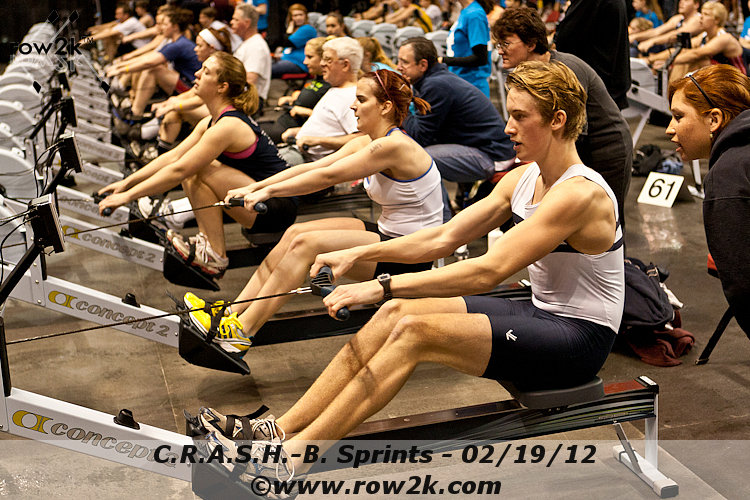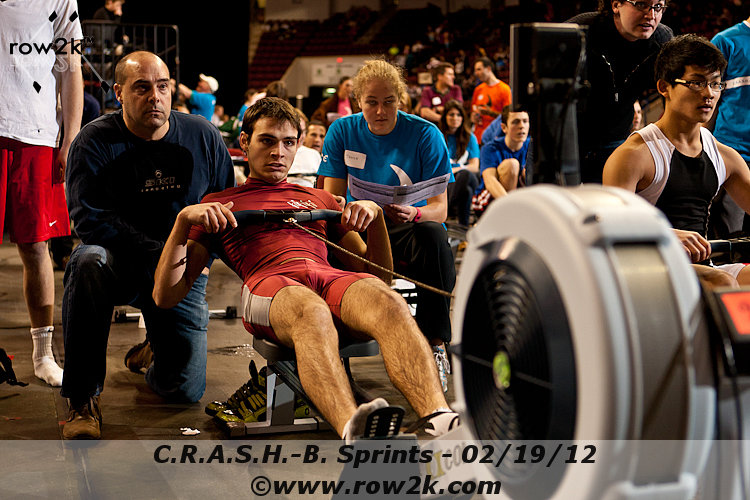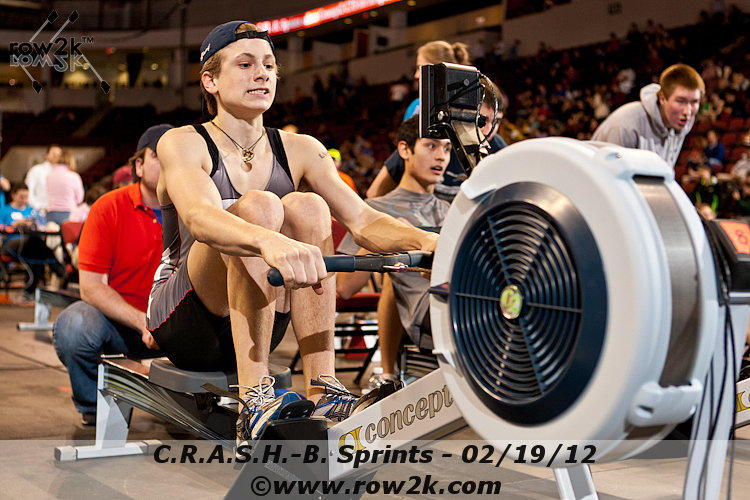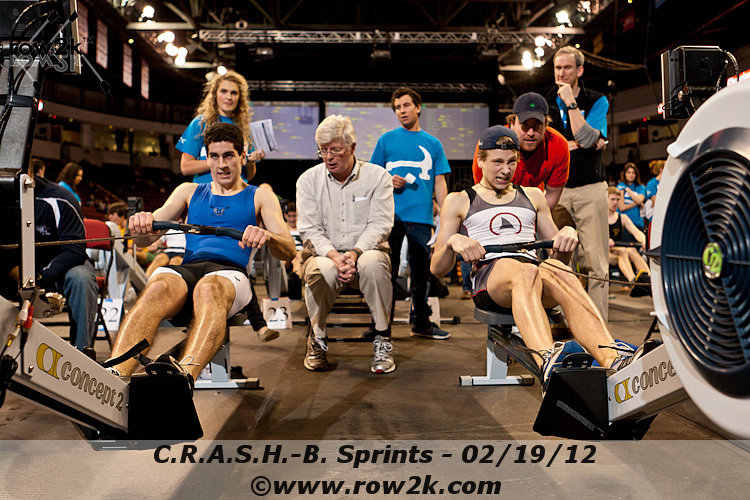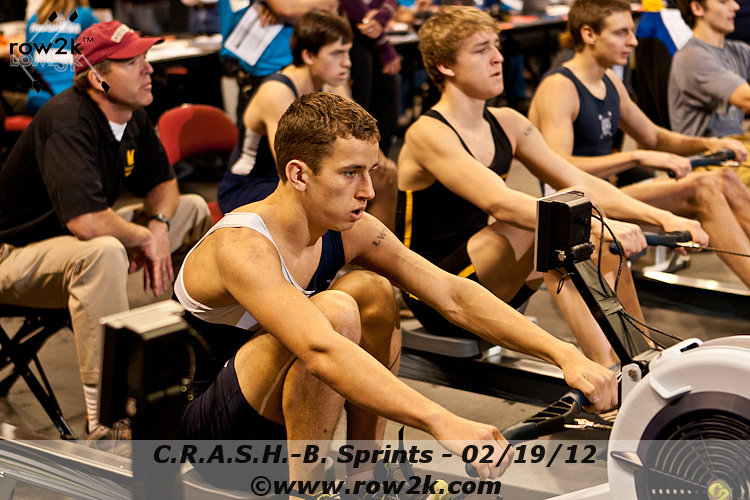A guest post by Xeno Muller who observed the US ergo competition ‘CRASH-B‘ with a view to technique improvement. You may also want to read our contentious post about erg style.
Rower in the foreground has technical problems, whereas second rower shows a better hang.
Technical issues to consider: You may have heard about “the proper way of rowing” however when you see somebody row in front of you, you may find the task of correcting a rowing stroke a bit daunting. As seen on this picture, very often you find people combining pulling with pushing. The arms bend during the leg drive while the back is close to being in its final finish angle. It is also not unusual to spot many toe pushers, or “ball of the foot finishers.”
These types of athletes are victim to a lack of support in their lower back. Their elbows point straight down to the floor, with wrists at a 90 degree angle to their forearms. The lay back is almost level to the ground with the handle pulled to the upper half of the pectoral muscle. In such instances it is rarely the case that the knees are fully straight, instead they show a slight angle with a quadriceps that is not engaged. Such a finish position leads the rower to return the handle… the lay back, and the knees back to the catch, all at the same time. In this manner, the hip flexor is wrongly used to lift the knees, which completely leaves out the use of the hamstrings. The preparation of the upper body lags behind in comparison to the timing with the rise of the knees, this creates a stop of the knees at the full catch compression and results in a reach of the upper body and elbow extension to get the handle as close to the flywheel as possible. This leads to an early contraction of the arms with a premature opening of the back, putting the leg drive in a secondary position.
Here are more pictures I found to illustrate what I am describing above.
If you are one of the rowers in these pictures, feel no shame, because 99% of the rowers who took part at CRASH-B share your technique. I am confident of my statement, because I know from personal experience the disconnect that exists in coaches’ minds between water rowing and erging.
This picture illustrates well the above described rowing stroke. Also I am not quite sure what is going on with the right foot.
This is a clear early arm draw, which puts the leg drive on the back burner, the upper body is opening early, while the heel has not yet connected to the foot board. This is a clear early arm draw, which puts the leg drive on the back burner, the upper body is opening early, while the heel has not yet connected to the foot board.
On the right, the rower is on the recovery, while the left rower is in the drive phase. The individual symmetry is totally lacking. Key to noticing who is driving and who is on the recovery is the characteristic of the chain. Tight on the left, floppy on the right.
This picture I chose not necessarily for the first two rowers. Most of the pictures taken by row2k are in the drive phase so it is hard to find shots on the recovery. Have a look at the rower all the way to the right. He is on the recovery, combining every part of his body to move to the catch. Such a rower creates a rush in a team boat. The fellow in the middle has an early opening of back, is breaking the arms at the same time, and the angle of the upper body is already at vertical which leaves nothing to connect in the last quarter of the leg drive. The young rower at the forefront is gripping the handle in his fist reducing his ability to maximize his effective length at the catch and at the finish.

